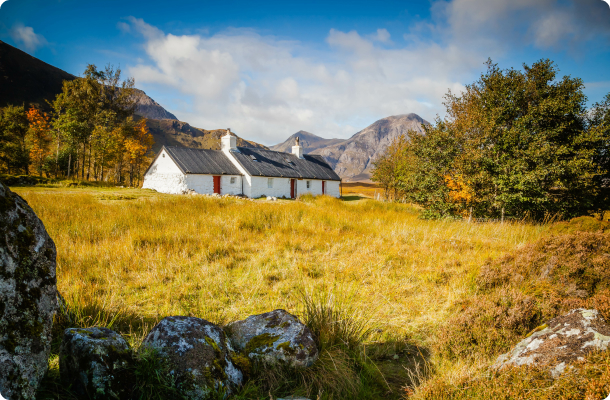Table of Contents
ToggleFeature image credit – Damian Shields Dunfermline Council
When Googling ‘Scotland capital’, you’d naturally expect to be presented with images and information about Edinburgh. After all, Edinburgh is the official capital of Scotland, at least in today’s times.
However, long before this modern world, there was another location in the kingdom of Scotland which formed the base of many a monarch. One which was the burial place of seven Scottish Kings. This location, therefore, was once considered the capital of Scotland by King Malcolm Canmore and many of its other blue-blooded residents who resided here.
This most mysterious ancient capital of Scotland is in fact Dunfermline City. It can be found just north of Edinburgh when crossing the Forth Bridge.
With a history stretching back to Neolithic times, Dunfermline has played host to many a royal in its time, including the marriage between Malcolm III, King of Scots and Saint Margaret.
For those planning a visit to Scotland, here is an overview of the history of the must-see city of Dunfermline. Plus a guide to some of the best spots to check out to make the most of your trip.
Dunfermline City: An Overview Of Its History
With a population of around 58,000 residents, Dunfermline’s name is thought to represent ‘Fort of the Crooked Water. This name refers to an old castle which was positioned high above the gorge of Pittencrieff Glen.
Dunfermline happens to be Scotland’s newest city as well as Scotland’s ancient capital. City status for Dumfermline was announced as part of Queen Elizabeth II’s Platinum Jubilee celebrations, and was conferred by King Charles III on one of his first official engagements since becoming king.
However, travel back 700 years, and it was a very different story as Robert The Bruce actually fought off an invasion by The English in this very same place. Coincidentally, Dunfermline was the birthplace of another king called Charles in 1600, who happens to be the last monarch to be born in Scotland.
Much of Dunfermline’s history lies waiting to be discovered at Dunfermline Abbey which also houses the mausoleum of St Margaret, David I and Robert I.
Interestingly, the name of Robert I (Robert the Bruce) can be seen written out on the top of the Abbey today, as it was he who was responsible for financing its rebuilding in 1303 following damage inflicted by Edward I. At the time, the move displayed great confidence as well as affluence following the wars between Scotland and England.
The more recent history of Dunfermline saw it become a hub of the linen industry in the 18th century, due to its strategic positioning along the Fife coastline which provided a water supply for the trade.
The waters close to Dunfermline again played a key role in the area’s economic growth throughout the 19th century, where the Royal Navy established Scotland’s only Royal naval dockyard in nearby Rosyth.
Moving into the present day, and the rapid expansion of the population in the last 30 years has seen Dunfermline become a popular location for families and commuters who have settled in the area. The city’s close proximity to Edinburgh is also a huge draw for visitors.
Visiting Dunfermline
When visiting Scotland, Edinburgh is naturally on every traveller’s list, attracting some 5 million visitors each year. While Edinburgh is of course as majestic as the rest of Scotland, its high volume of visitors has led to some citing it is now an ‘over tourism hotspot’.
Fancy escaping the crowds to discover the history of Scotland in a more unique, personalised way?
Just 18 miles north of Edinburgh lies the newly crowned city of Dunfermline, which as the ancient capital of Scotland offers history and culture in abundance – just without the hoards of people to contend with. Therefore, Dunfermline makes for an excellent choice for those who want to feel like a local, rather than a tourist when exploring its ancient monuments.
In many ways, Dunfermline has a gentler pace which also makes it attractive as a place to spend time here. Traditional Scottish stone adorns its streets giving an authentic feel of how locals have experienced this city for generations. Dunfermline High Street offers an abundance of conveniences including shops, bars and restaurants to fuel your walk around the city.
Unsurprisingly, Dunfermline Abbey is the star attraction of the city and can be found on St Margaret Street. Here you can discover almost a thousand years of Scottish history. Alternatively, another way to experience the abbey is by taking part in the Outlaw King Tour, which is a private tour where you’ll get to visit the site of famous battles and learn more about what happened when Scotland’s ancient city of Dunfermline still ruled supreme.
When Is The Best Time To Visit Dunfermline?
Dunfermline is accessible all year round, meaning it’s possible to visit the city whenever you’d prefer to.
That said, it’s always good to keep in mind Scotland as a whole tends to experience lower temperatures than the rest of the UK. Scotland is also more prone to inclement weather conditions, particularly snow and heavy rain which could make exploration on foot more difficult in the winter months.
Temperature wise, April to September offers the most pleasant weather conditions in Dunfermline, averaging 19°C in August. It is always worth bringing warm layers with you wherever you visit, as the evening temperature will fall.
If you’re interested in what’s on at a particular time of year, Dunfermline has its own local website along with an events board which is regularly updated.
Getting To Dunfermline – Travel Scotland Information
While some areas of Scotland can be difficult to access due to their remote positioning, Dunfermline benefits from having excellent transport connectivity.
Dunfermline is located in the area of Fife and is just 18 miles north of Edinburgh. Therefore, it’s perfectly possible to plan a day trip to Dunfermline if staying in Edinburgh, or nearby locations north of the Firth of Forth river.
Road
The M90 (Queensferry Crossing to Perth) runs along the eastern side of Dunfermline. The A823 connects with the centre of Dunfermline along Queensferry Road and St Margarets Drive.
There are several car parks ideally located to explore the city centre, including West Drive Car Park and Viewfield Terrace Car Park.
Rail
Dunfermline Town is the most centrally located train station in the city. It is served by ScotRail with frequent services to Cowdenbeath, Edinburgh and Glenrothes with Thornton.
Airport
Edinburgh Airport is 15.2 miles from Dunfermline and is the closest international airport to the city.
Glasgow Airport is 49.6 miles from Dunfermline. If travelling from Glasgow, it’s possible to get to Dunfermline via the M80 or use a mixture of bus and train services if using public transport.
Bus
Stagecoach runs many bus services throughout Fife connecting with other nearby areas. View a live map of Stagecoach services in Fife to learn more.
Sea
Dunfermline is located 3 miles from Rosyth which has a ferry terminal. At present, the ferry terminal is only used for freight.
However, it was recently announced that in 2023 it is expected the area will regain a passenger service between Rosyth and Zeebrugge. If so, this could connect Dunfermline with Europe making it particularly appealing for those in search of an island escape.
Dunfermline To Edinburgh
As noted above, Dunfermline is extremely close to Edinburgh making travel between the two very straightforward.
By road, the two locations are connected via the A90 and M90 with a driving time of around 40 minutes.
Taking the train from Edinburgh to Dunfermline takes around the same time, with a direct Scotrail service in either direction.
There is also the Halbeath park and ride which connects with the X61 service to and from Edinburgh.
The X55 bus service also runs between both locations and is around a 50 minute journey.
Dunfermline City FAQs
Thinking of paying a visit to Dunfermline? We’ve answered some of the most popular questions about this once royal burgh below.
What Is Dunfermline Famous For?
Dunfermline is famous for being the ancient capital of Scotland through its many royal associations. It was once home to the seat of power for Scotland, and back in the day was also known as a city, until James I died in Perth in 1437. In its day, Dunfermline saw many monarchs based in the area, seven of which were buried here. Dunfermline was once again made a city in 2022 by King Charles III.
Is Dunfermline A City?
Dunfermline was most recently classed as a town, but as of 2022, it was granted city status. At the time of writing, Dunfermline is Scotland’s newest city. As a result, we expect visits to Dunfermline to steadily increase over the coming years, since all eyes are drawn to its many attractions, not to mention Dunfermline’s historical significance.
What County Is Dunfermline In?
Dunfermline is in the Scottish county of Fife. Other locations found in Fife include St Andrews, Kirkcaldy, Glenrothes, Leven, Cupar and Newburgh. If staying in any of these destinations, why not give Dunfermline a visit?
What To Do In Dunfermline
Soaking up all the history of the ancient capital of Scotland is hugely recommended when visiting Dunfermline.
In particular, a visit to Dunfermline Abbey is a must which you can do by booking tickets in advance. Other attractions in the area include Pittencrieff Park, Knockhill Racing Circuit, Carnegie Birthplace Museum and the Scottish Vintage Bus Museum.
There are a wonderful array of restaurants, cafes, pubs and pubs in and around Dunfermline City Centre. Here you’ll find an array of local cuisine as well as dishes inspired by travels further afield.
Does Dunfermline Have A Beach?
There are approximately 20 beaches close to Dunfermline which are possible to visit if you’re staying close by, due to the county of Fife having a spectacular coastline.
Some of the closest local beaches to Dunfermline include Silver Sands Beach in Aberdour and Pettycur Beach in Burntisland. A walk along the Kirkcaldy Promenade is also highly recommended, where you’ll be treated to stunning views and a healthy dose of sea air.
Is Dunfermline A Nice Place To Live?
The city of Dunfermline is a wonderful place to visit or indeed live in. Some of the best attributes about Dunfermline is that it is great for families, and has excellent transport links while also being in close reach of several coastal destinations.
A Numbeo survey of residents also praises the safety aspects of Dunfermline. The city has a crime index rating of just 34.72/100, which is lower than most other towns and cities in the area.
Dunfermline was also rated the ‘third most improving city’ in the United Kingdom. Some of the aspects which earned the title were based on the city’s community spirit, excellent historic attractions and cultural venues. Dunfermline was also cited as a popular place to live by commuters of nearby Edinburgh.
Thinking of moving to Dunfermline? Try out living in Dunfermline by renting some of our self catering accommodation in or nearby the city as you get to know the area.
Holiday Rentals Scotland – Dunfermline Fife Accommodation
Ready to immerse yourself in the rich history of Dunfermline? Now that Dunfermline has been granted city status, we expect to see plenty of events and celebrations highlighting all that is great about this wonderful city, plus more about its history. There’s no better way to explore all that Dunfermline has to offer than by visiting it yourself.
Book your visit to Dunfermline today, or any other location across Scotland with Best Scottish Cottages. To see our current availability, head over to browse all accommodation. Here you can select accommodation types ranging from city centre hubs to wilderness retreats. We have options for those with additional needs, and even dog friendly accommodation meaning everyone.
Be sure to give us a follow on Instagram, Twitter or Facebook where we post regular inspiration for your next break in Scotland. Plus, be the first to find out about our latest holiday rentals or special deals to avoid missing out.





